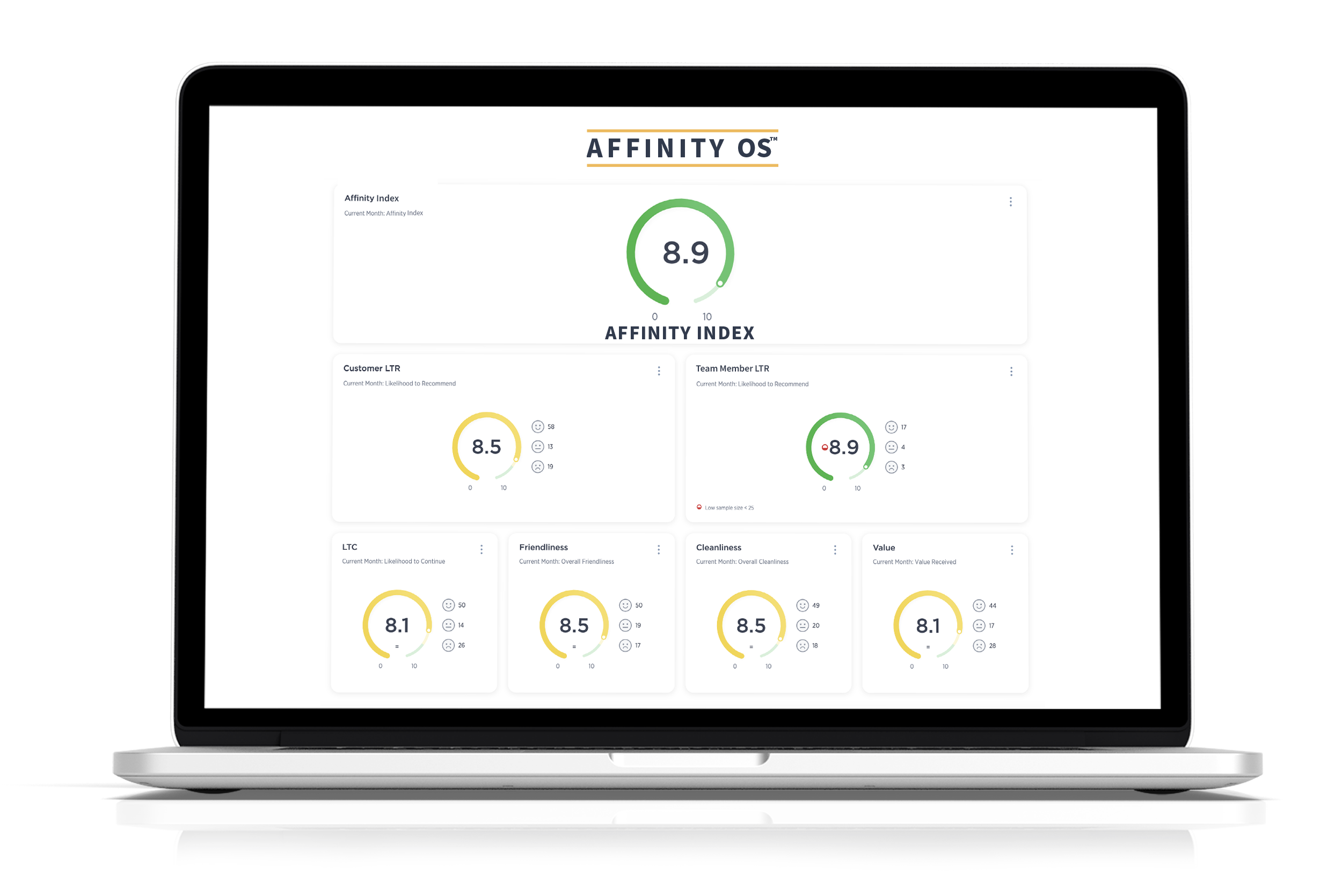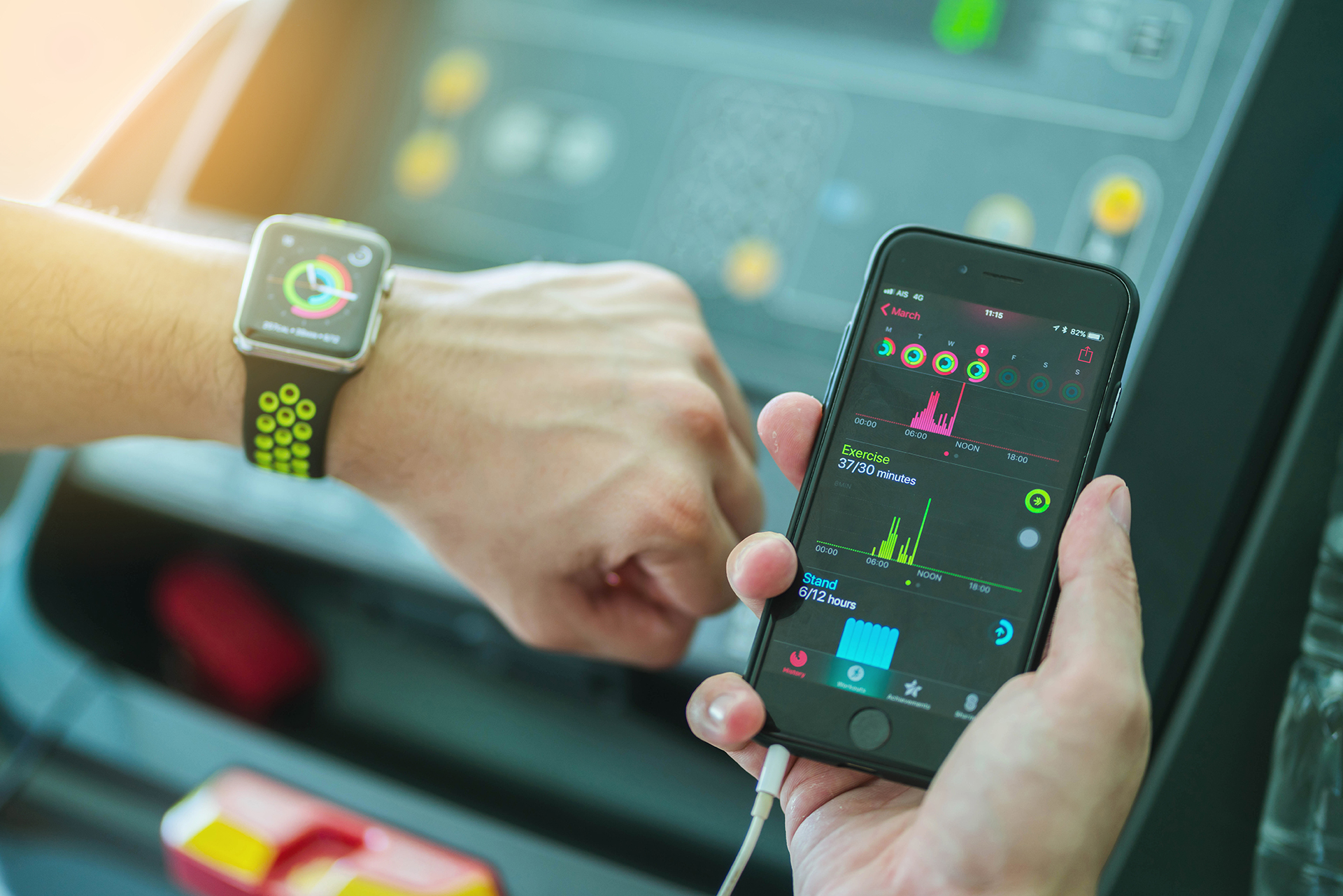2024 Global and Regional Fitness and Wellness Industry Trends
Listen Now - 19 min. 39 sec.

Grant Ian Gamble is a best-selling mindful leadership author and speaker. He has over 30 years of experience in leading teams to create innovative customer experiences, building engaged workforces, and developing leaders who prioritize mindfulness in their approach.
Keeping up-to-date with industry trends is vital for adapting and ensuring your health and wellness club remains competitive and relevant. This section will cover both regional and global trends.
AUSTRALIA
The fitness and wellness industry in Australia is set to embrace several innovative trends in 2024, reflecting a broader shift towards personalized, holistic, and technologically integrated health experiences. Here’s an overview of the key trends predicted to shape the industry:
- Health and Training for Longevity: There’s a growing emphasis on fitness regimes that not only improve physical fitness but also contribute to a longer, healthier life. This trend highlights the importance of a holistic approach to health, incorporating various elements like cardiovascular and strength training, flexibility exercises, and mindfulness practices.
- Hormone-focused Workouts: Tailoring workouts to optimize hormone levels in the body is gaining traction. These routines are designed to support physiological processes such as metabolism and muscle growth, contributing to overall well-being.
- AI-powered Training Resources: The integration of Artificial Intelligence (AI) in the fitness industry is revolutionizing training methods by offering personalized workout plans. These AI-driven platforms and apps provide tailored advice based on an individual’s fitness levels, goals, and health data, making training more accessible and customized.
- Meaningful Fitness Experiences: There’s a shift towards fitness experiences that offer more than just physical benefits. People are seeking immersive, engaging activities that also provide mental and emotional enrichment, leading to a deeper connection with their wellness pursuits.
- Reformer and Mat-based Pilates: Both reformer and mat-based Pilates are seeing a surge in popularity, with a focus on core strength, flexibility, and overall body conditioning. These low-impact workouts are adaptable to various fitness levels, making them accessible to a wide audience.
- Personalized Fitness Experiences: The rise of wearable technology, AI, and augmented reality is set to deliver highly personalized fitness experiences. These technologies offer real-time feedback and custom fitness solutions, enhancing individual workout journeys.
- Holistic Fitness Approaches: There’s an increasing focus on combining physical workouts with mental well-being practices. Future fitness programs are expected to integrate yoga, meditation, and natural movement exercises, promoting a balanced approach to health.
- Sustainability in Fitness: The fitness industry is moving towards more eco-conscious practices. This includes the use of sustainable materials in workout gear and equipment, and the adoption of green energy sources in fitness facilities, aligning fitness goals with environmental values.
- Virtual and Augmented Reality Workouts: Technologies like VR and AR are creating immersive workout environments, offering unique and engaging fitness experiences that go beyond traditional exercise routines.
- Inclusivity and Diversity: The industry is evolving to be more inclusive, catering to a diverse range of individuals across genders, abilities, cultures, and body types. This shift ensures fitness is accessible and relevant to everyone.
- Hyper-Personalized Workouts: Advancements in AI are enabling the creation of highly individualized fitness plans that adapt in real-time to an individual’s performance, biometrics, and even emotional state. This level of personalization is transforming how fitness services engage with customers.
- Emerging Wellness Trends: The concept of shorter working weeks is gaining interest, potentially impacting the wellness industry by allowing more time for personal health and fitness. Additionally, the use of AI bots for cognitive therapy and the rise of social wellness clubs are trends to watch, offering new ways to support mental health and foster community in fitness settings.
These trends indicate a future where fitness and wellness in Australia are not just about physical health but encompass a comprehensive, personalized, and environmentally conscious approach to well-being.
U.S.
The fitness and wellness industry in the U.S. is set to embrace a diverse range of trends in 2024, reflecting advancements in technology, a shift towards holistic health, and a renewed focus on personalized fitness experiences. Here’s a summary of the key trends identified:
- Wearable Technology: Fitness trackers, smartwatches, heart rate monitors, and GPS tracking devices continue to dominate, providing detailed insights into health metrics like heart rate, calories, and sleep patterns.
- Worksite Health Promotion: Work-related wellness programs are gaining traction, indicating a growing corporate emphasis on team member health and well-being.
- Fitness Programs for Older Adults: Tailored interventions for the aging population are becoming more prevalent, focusing on their unique fitness needs.
- Exercise for Weight Loss: A holistic approach to weight loss that combines dietary and culinary interventions with exercise routines is emerging.
- Certified Exercise Professionals: The employment of certified fitness professionals, who have undergone comprehensive training and accreditation, is becoming increasingly important.
- Mobile Exercise Apps: Smartphone applications are playing a significant role in aiding exercise performance and programming, reflecting the digitalization of fitness.
- Exercise for Mental Health: Physical activity is being increasingly recognized for its benefits to mental well-being, with fitness programs incorporating elements to improve mental health.
- Youth Athletic Development: Engaging young people in sports and related activities is gaining importance, highlighting a focus on early physical education.
- Personal Training: One-on-one training sessions tailored to individual goals and fitness levels continue to be a popular trend.
- Holistic Health and Wellness: There’s a shift towards comprehensive wellness that includes not just physical but also mental health, with fitness centers evolving into wellness hubs offering services like mindfulness classes and stress management resources.
- Sustainability: The industry is embracing environmentally responsible practices, from using recycled materials for equipment to eco-friendly workout apparel.
- Inclusivity and Accessibility: Fitness is becoming more inclusive, with adaptive fitness programs and offerings for various demographics, ensuring everyone has access to exercise opportunities.
- Integrated Medical Fitness: Collaborations between the fitness industry and healthcare providers are growing, offering evidence-based exercise programs tailored to individuals with specific medical conditions.
- Fitness as an Experience: The trend towards creating memorable and immersive fitness experiences, such as forest bathing and camp-style workouts, is on the rise, emphasizing community building and a connection with nature.
These trends indicate a move towards a more personalized, inclusive, and holistic approach to fitness and wellness in the U.S., integrating technological advancements and sustainable practices to cater to the diverse needs of the population.
ASIA
In Asia, the fitness and wellness industry trends for 2024 are being shaped by a combination of rising health awareness, technological advancements, and cultural shifts towards more sustainable and holistic health practices. Here’s an overview of the key trends:
- Sustainable Gyms: There’s a growing demand for fitness facilities that incorporate eco-friendly practices, from using energy-efficient equipment to integrating natural elements into their design. This trend aligns with a broader cultural move towards environmental sustainability and wellness.
- Natural Energy Alternatives: Moving away from traditional stimulants like caffeine and alcohol, there’s a shift towards natural sources of energy. Adaptogenic herbs, nutrient-rich superfoods, and other natural alternatives are becoming popular for their ability to provide sustained energy without the negative side effects associated with caffeine and alcohol.
- Virtual Workouts: The rise of virtual workouts continues, with technology playing a crucial role in delivering diverse and interactive fitness experiences right into people’s homes. This trend is expanding with augmented reality and interactive wearables, making fitness more accessible and engaging.
- Blood Sugar Balance: There’s an increasing focus on maintaining stable blood sugar levels for overall well-being. This trend is driven by a deeper understanding of the impact of diet and lifestyle on health, leading to a demand for products and practices that support blood sugar harmony.
- Flexible Hydration: The approach to hydration is becoming more diversified, incorporating elements like collagen, added fiber, and natural alternatives to plain water. This trend reflects a more holistic view of hydration, tailored to individual needs and health goals.
- Female Reproductive Positivity: Technology is empowering women with innovative apps focused on period tracking, alternative birth control, and menstruation health. These apps are changing the narrative around female reproductive health, promoting informed decision-making and openness.
- Skincare 2.0: The intersection of beauty and wellness is evident in the emergence of beauty supplements like collagen bars and gummies. These products combine the benefits of traditional skincare with the convenience and nutritional value of wellness supplements.
These trends indicate a shift towards more personalized, sustainable, and technology-driven health and wellness practices in Asia, reflecting a holistic approach that encompasses both physical and mental well-being.
EUROPE
In Europe, the fitness and wellness industry trends for 2024 are evolving with a focus on digitalization, personalization, and holistic approaches to health. Here’s an overview of the significant trends shaping the industry:
- On-demand Fitness Services: The popularity of platforms like Peloton, Aaptiv, and Les Mills is on the rise, tapping into the millennial preference for personalization, freedom, and experiences. These services benefit from improved internet connectivity and streaming capabilities, meeting the demands of a generation that values wellness and is willing to invest in compelling brands.
- Virtual and Online Fitness: Distinguished by the use of videos, blog articles, or programs, online fitness has seen significant growth, especially post-pandemic. The market, which was already expanding, has experienced even greater increases in online personal training and virtual workouts incorporating digital technology and sometimes even virtual reality.
- Wellness Tourism: Europe is witnessing a growing interest in wellness tourism, with a significant market share following North America. The trend encompasses consumers looking for travel experiences that emphasize physical and mental well-being, with a notable increase in wellness-focused vacations that offer a range of health-promoting activities.
- Rowformer Workouts: A new trend blending the resistance exercises of Reformer Pilates with the cardiovascular intensity of rowing, known as Rowformer workouts, is gaining traction. This hybrid workout is appealing for its dynamic approach to fitness, combining strength, flexibility, and cardio within a single session.
- Gen Z Dance Workouts: Influenced heavily by platforms like TikTok, dance fitness is becoming particularly popular among Gen Z. These workouts are about fun and expression, utilizing social media to make fitness accessible and enjoyable, and indicating a shift towards more joyous and social forms of exercise.
- Technology in Personal Fitness: The integration of AI and virtual reality in fitness is creating personalized and immersive workout experiences. This technology is making exercise more engaging and tailored to individual goals, reshaping the industry with advancements like wearables and interactive fitness platforms.
- Rest and Recovery Holidays: There’s a rising trend towards vacations focused on rest, recovery, and sleep hygiene, particularly among Gen Z and Millennials. These getaways are designed to prioritize relaxation and mental rejuvenation, aligning with the increased awareness of the importance of mental health and quality rest.
- Boutique Boxing Clubs: Boxing is making a comeback in more personalized, community-oriented boutique clubs. These clubs emphasize high-quality, personalized training and a holistic fitness approach, offering a more curated and social experience compared to traditional gyms.
- Online Personal Training: The convenience and accessibility of online personal training make it a popular choice, offering personalized training programs and the flexibility to work out anytime, anywhere, catering to the digital lifestyle of consumers today.
- Employing Certified Exercise Professionals: There’s a growing emphasis on hiring certified exercise professionals to ensure fitness routines are safe, effective, and scientifically sound, highlighting the industry’s move towards more specialized and diverse fitness offerings.
These trends reflect a dynamic blend of technology, personalized experiences, community-building, and a holistic approach to health and well-being, setting the stage for a transformative year in the fitness and wellness industry in Europe.
GLOBAL TRENDS
In 2024, the global fitness and wellness industry is witnessing significant transformations, driven by evolving consumer preferences, technological advancements, and a heightened focus on holistic health. Here’s an overview of the key trends shaping the landscape:
- Holistic Health and Wellness: The industry is moving towards a more integrated approach to health, combining physical fitness with mental and emotional well-being. Wellness classes, including yoga, meditation, and tai chi, are becoming increasingly popular, focusing on improving flexibility, strength, mental clarity, and overall life quality. The rise of wellness technology, such as wearable devices and virtual reality, is expanding the scope of wellness beyond physical health, emphasizing the importance of mental health support and building community around wellness offerings.
- Personalization in Fitness: Customization is becoming a cornerstone of the fitness experience, with facilities offering tailored workouts, individualized nutrition guidance, and progress tracking to meet the unique needs and goals of each member. Specialized classes and personal training sessions are being designed to cater to a variety of preferences, enhancing member satisfaction and retention.
- On-demand Fitness Services: Digital platforms like Peloton, Aaptiv, and Les Mills are capitalizing on the millennial demand for personalized, flexible fitness experiences. The trend towards on-demand fitness is supported by improved internet connectivity and streaming capabilities, making fitness more accessible and appealing to younger generations.
- Virtual and Online Fitness Growth: The online fitness segment, encompassing digital and virtual workouts, has seen significant growth, with predictions of substantial market expansion. This trend reflects a broader shift towards digital wellness offerings, allowing consumers to engage in fitness activities from the comfort of their homes.
- Emerging Markets and Demographics: The fitness industry is also seeing potential growth in emerging markets such as Asia, with countries like India and China experiencing rapid expansion. Additionally, there’s a growing focus on catering to Gen Z and millennials, who are showing a high interest in fitness and wellness, driving the demand for innovative and engaging fitness solutions.
- Worksite Health Promotion: There’s an increasing emphasis on integrating wellness programs into the workplace, with a focus on holistic team member well-being. This trend is partly a response to the shifts in work environments post-COVID-19, aiming to incorporate health and fitness into the corporate culture to improve overall team member health and productivity.
- Fitness Programs for Older Adults: As the population ages, there’s a growing demand for fitness programs tailored to the needs of older adults. These programs are designed to address the unique health challenges faced by this demographic, emphasizing the importance of maintaining physical activity for improved quality of life and independence.
These trends highlight a dynamic evolution in the fitness and wellness industry, with a clear move towards more personalized, holistic, and technologically integrated health and wellness solutions, catering to a diverse range of consumers across different age groups and geographical locations.
Sources:
Global Wellness Institute
Australian Institute of Fitness
IHRSA
The American College of Sports Medicine (ACSM)
Les Mills Asia Pacific
Wearable Technologies
The Guardian
Well+Good
EuropeActive
Statista
Deloitte
WHO

 Interested in learning more about how to transform your organization’s approach to team member engagement and customer experience? Reach out to our team at AFFINITY OS, specialists in AI-driven customer experience and team member engagement optimization.
Interested in learning more about how to transform your organization’s approach to team member engagement and customer experience? Reach out to our team at AFFINITY OS, specialists in AI-driven customer experience and team member engagement optimization.

Dive into the heart of exceptional leadership and customer-centric success with AOS Academy. Our certification courses, guided by the “PEOPLE FIRST, ALWAYS” mantra, are designed to support professionals as mindful, effective leaders and service providers.
By integrating key insights from Grant Ian Gamble’s best-selling mindful leadership book, “The Affinity Principle”, we focus on nurturing people-centric cultures of empathy, effective communication, and customer service excellence.
The AOS Academy is more than just training – it’s a journey towards personal and professional transformation, ensuring every interaction and decision is rooted in understanding and valuing people first.
Put PEOPLE FIRST, ALWAYS and watch your business flourish.
Dive deep into the latest trends in customer experience and team engagement, mindful leadership and management. Discover practical tools and strategies that you can use to build a people-centric culture, the foundation for sustainable long-term business growth and success.
Led by mindful leadership expert, Grant Ian Gamble, a best-selling author and true visionary with over 30 years of experience in leading teams to create innovative customer experiences, building engaged, inspired and fulfilled workforces, and developing leaders who prioritize genuine connection in their approach.
The guiding principle behind all of Grant’s work is PEOPLE FIRST, ALWAYS.

More Articles:
How to Win the America’s Cup of Fitness Business
Team New Zealand’s innovative application of digital technology in yacht racing contributed significantly to its back-to-back victories in the America’s Cup races of 2017 and 2021. The team had a thorough understanding of the performance of its 75-foot AC75 monohull even before its launch in 2021, thanks to an AI-powered simulation tool. This tool enabled the team to conduct virtual races across numerous prototypes, honing their skills to navigate at speeds of 50 knots on meticulously refined hydrofoils under challenging conditions.
Fitness Industry Boom Amid a Significant Decline in Online Search for Fitness?
There is, seemingly, a health and fitness club or a boutique offering on every street corner today. And yet online searches for health and fitness clubs have diminished significantly. IBISWorld reports over 6,466 Gyms and Fitness Centres in Australia in 2024, and that does not include many outlier categories. And yet, online searches for these facilities have diminished by almost 10%!
Member Referrals are Like a Box of Chocolates…Or are They?
Referrals are the No.1 source of Members in the Fitness and Wellness Industry!
Some facts:
Referrals are the number one source of new members across the fitness and wellness sector.
$ROI is highest on Referrals when compared to all other marketing sources
Three quarters of all referrals come from ‘Promoters’ (high NPS* score) in the fitness and wellness sector.
The avg. referral rate for Promoters = 58% when offered a referral opportunity.
Prospective members are 4x more likely to join a gym if they were referred by a friend.
In the fitness industry, referred members have historically had a 37% higher retention rate as opposed to non-referred members.**








